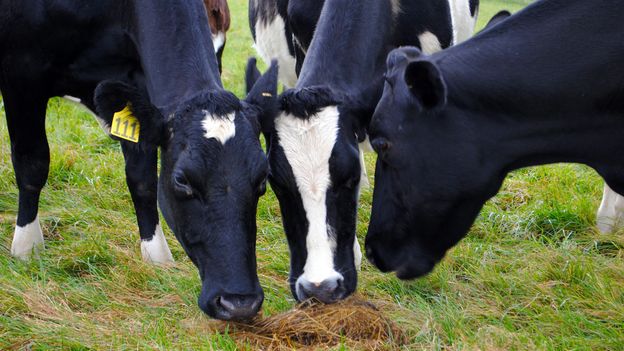



Article by: Hari Yellina
Thanks to a new $19 million research collaboration with Meat & Animals Australia, the NSW Department of Primary Industries, and Angus Australia, the University of New England is taking the next step in its drive to rescue the globe by breeding low-emission livestock. Professor Julius van der Werf and Associate Professor Sam Clark of the University of New England will lead two projects aimed at improving the genetics of sheep and cattle, and if successful, Australian farmers will have access to DNA-based breeding information that will result in more methane-efficient livestock. According to Professor van der Werf, “these efforts could result in a 25% decrease in methane production from Australian livestock by 2050.”
“While genetic progress toward reducing methane emissions is modest, the results are cumulative, and the initiative intends to cut methane emissions by 1% per head every year.” They’ll measure the methane output of 8000 cattle and 10,000 sheep in feedlot and pasture environments over the next five years. The $14.5 million beef component will be led by Associate Professor Clark in collaboration with the NSW DPI, MLA, and Angus Australia, while the $4.5 million sheep study will be led by Professor van der Werf in collaboration with the NSW DPI and MLA. “We’ll look at the differences between the animals and utilise the data to determine whether animals have the genetics that will reduce the amount of methane each animal produces naturally,” explains Professor van der Meer.
“Feed intake will be assessed as well, as feed efficiency may be aligned with animals that exhale less methane. “Both teams will collaborate closely with the University of New England’s Animal Genetic and Breeding Unit to develop methane breeding values for Australian cattle and sheep.” While some of the study will take place in controlled environments at UNE and the NSW DPI’s research facilities, the studies will also monitor methane outputs from commercial sheep and cattle on-farm. “As the largest research feedlot in Australia, UNE’s Tullimba Feedlot will offer us with an important opportunity to monitor feedlot cattle’s methane output,” says Associate Professor Clark.
“We’ll also have the opportunity to interact with breeders from all over Australia as we look at the effects on animals in a variety of situations, including those in the paddock.” “Grazing cattle and sheep account for a significant amount of the Australian livestock business, therefore it’s critical that we gather this information so we can make a genuine difference in the industry.” Not only will this project assist Australian breeders and producers, but it will also provide an opportunity for the future generation of agricultural scientists and researchers to participate. “We’ll have a number of students working on these initiatives, and all of our research will feed into our teaching, allowing us to generate graduates who are at the cutting edge of agricultural innovation,” says Professor van der Werf.
“UNE is continuing to assist the agriculture industry in acting on climate change and being more sustainable through this interesting research in collaboration with the NSW DPI and Angus Australia.” The activities will begin this month and are part of MLA’s Carbon Neutral Strategy’s Emission Avoidance Program.